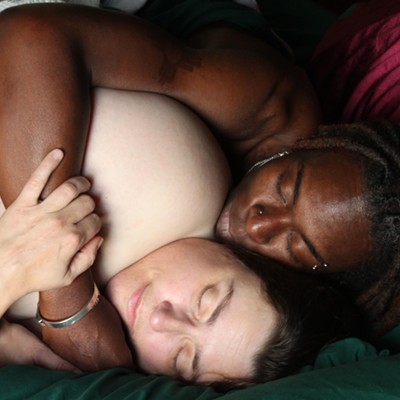It's true, all right, though that was so long ago that its physicians couldn't even go to the Voodoo Lounge to unwind.
The drive to build the Western Pennsylvania Hospital started in the 1840s, when Pittsburgh was still something of a frontier town, and when we called institutions by their full names. In 1844, a health-care activist named Dorothea Dix came to assess the city's health-care situation and, surprisingly enough, found it wanting. But as Leland Baldwin notes in Pittsburgh: the Story of a City, "Miss Dix did not limit herself to criticism" -- which is how everyone knew she was from out of town. Instead, she began lobbying Harrisburg for funding
As the book Pittsburgh's Strip District: Around the World in a Neighborhood notes, the hospital was built on a 24-acre lot perched above Liberty Avenue at 28th Street. Why there? Because it was free land close to Downtown. The property was donated by two of the city's leading families: the Schenleys (of Schenley Park fame) and the Dennys (not of chain-restaurant fame).
Finished in 1853, the hospital building could house about 100 patients -- plus housing for its staff. And the building was in some ways the least of it; the hospital's first president boasted of its "extensive range of gardens and pleasure grounds." Given the city's increasing industrialization as the years went on, being sick could be much more pleasant than being healthy: You practically had to come down with a terminal illness just to get some fresh air. One of the hospital's selling points, in fact, was that it had its own springs to draw water from; at a time when cholera outbreaks were spread through the city's water "system" every few years, this was an important medical technology for a health-care facility to have. It was the 19th-century equivalent of an MRI machine.
The result, in the words of Leland Baldwin, was a hospital that was "[t]he humanitarian institution projected upon the most ambitious scale during those years."
Too ambitious, perhaps: The hospital ran out of money for construction before it could be completed. The hospital was saved by what was literally a grassroots effort: "Local gardeners and nurserymen helped establish a garden to provide fresh produce for the patients," Pittsburgh's Strip District recounts, and much of its furnishings were donated.
During the Civil War, Sara Killikelly's History of Pittsburgh informs us, the hospital's "ample wards were soon filled, nearly ten thousand soldiers being accommodated at a time in the large building and the temporary outside arrangements." That number is certainly inflated, but the hospital still brags about being the first veterans' hospital in the country's history.
It was also a key provider of care for the mentally handicapped, who had few other places to turn. The "department for the insane," as it was somewhat insensitively referred to, grew large enough to become a hospital all its own: The department was relocated down the Ohio River, where it came to be known as Dixmont Hospital (named after Dorothea Dix, the reformer who'd started it all). Today, developers hope to replace the long-abandoned asylum with a Wal-Mart ... which seems oddly appropriate.
The original West Penn, meanwhile, continued treating physical ailments, including many of those injured in the Strip District's steel mills. This, it must be admitted, was a pretty handy idea. Just as Andrew Carnegie built integrated steel mills -- arranging coke ovens, blast furnaces and finishing mills side by side -- the Strip District had a convenient way of handling one of the industry's chief byproducts: injured workers. It was just a quick trip down the street when you were hurt in an industrial accident.
Sadly, those who suffer occupational injuries in the Strip today -- like bouncers who throw out their shoulders, for example -- have farther to travel. According to West Penn's hospital history, the hospital moved to Bloomfield in 1912 due to "the expanding needs of patients and staff." Indeed, hospitals of old could barely contain a modern health-care facility's billing department.










